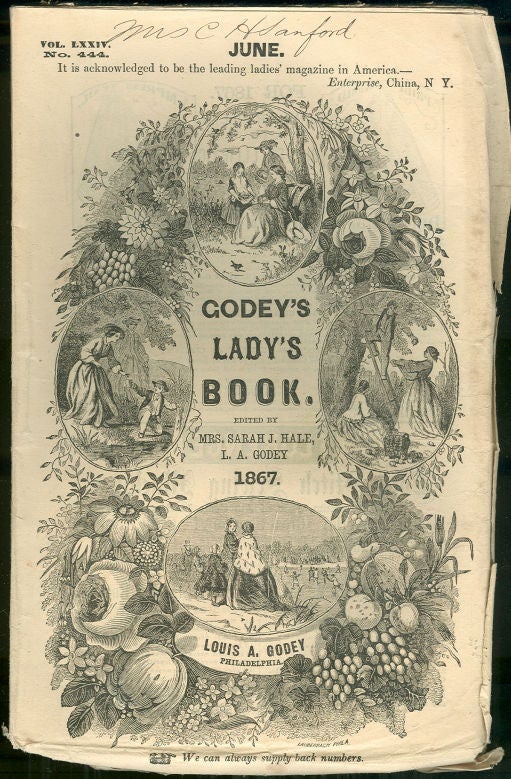Take Vogue, add a splash of Buzzfeed, and sprinkle liberally with The New York Times. No, it’s not your Twitter feed—it’s Godey’s Lady’s Book, one of the most influential American publications of the nineteenth century. But it turns out that the fashion-plate-filled magazine didn’t just affect what women wore; as Joseph Michael Sommers writes, it also attempted to halt the Civil War through its not-so-well-hidden patriotism.
Sarah Josepha Hale, the magazine’s charismatic editor, was to thank. As Sommers notes, she disagreed with her employer, Louis Gody, who thought that media should not have a political or national bias of any kind. Hale, on the other hand, was intensely patriotic—and she found plenty of ways to present her nationalistic views in the magazine. Godey’s pages soon included a veiled sort of “sentimental nationalism,” writes Sommers, one that reflected Hale’s own worries about a country on the verge of civil war.
The magazine had an enormous readership: By 1860, there were 150,000 subscribers to Godey’s Lady’s Book—no small feat in a country of only 31 million. The magazine’s huge readership in the North and South by the 1840s was “already unified, in a sense, thorough [its] readers,” and Hale found a way to circumvent her boss’s objection to nationalism through her editorial decisions.

Hale wanted union, so she invented one. She also regularly made pro-union political statements that she validated through letters to the editor that lent credence to her arguments. By putting seemingly unsolicited letters next to editorials, Hale “created an illusion of proof” that her ideas were universally supported.
The editor had another tactic: Sentiment. By invoking motherhood and domesticity, Hale made a sustained argument for national unity. She masked her worries about a potential war in stories that exalted how women could influence the actions of men from the sweet domesticity of their own homes. Historical narratives showed mothers gently guiding their men and children toward Hale’s preferred political conclusions. Mournful poetry about dead soldiers and lost sons helped the potential of war hit home—and, conveniently, couldn’t very well be pegged as political.
Hale’s style may have been sentimental, but it was also strident. The overall effect of her efforts created “a mosaic of ominous foreboding” in the years leading up to the Civil War, keeping the potential of a disastrous war in the forefront of readers’ minds. War would be a disaster, she implied to readers—but the common concerns of readers, she implied, could bring them together if they chose.
“In an effort to fight the secession of the South any way she could,” writes Sommers, Hale created a ‘covering fiction’ which tried to unite women throughout America in every city in an attempt to unite every city into a country.”







